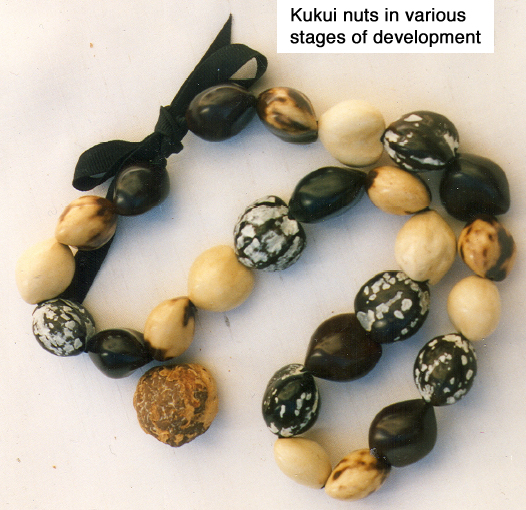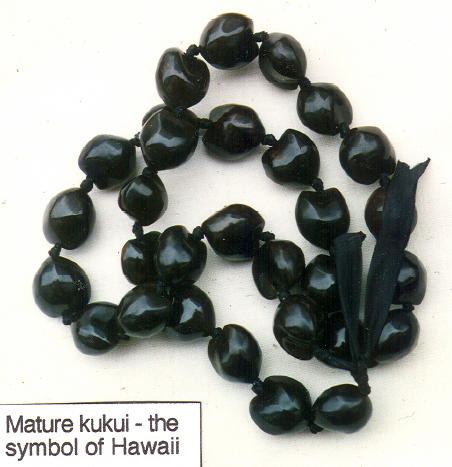

A necklace of flowers known as the lei is associated by most people with Hawaii. The practice of making leis began in Asia. As Asians migrated west to the Mediterranean region they brought the lei with them. In the Mediterranean region laurel leaves composed the lei. In other places suitable substitutes were found to adorn the bodies of people to be honored or welcomed. Lei styles and designs differed with each group who adopted the practice.
The Polynesian invaders of Hawaii, who came from the Marquesas Islands around 750 A.D., brought with them the traditions and art of the lei. Travel between Hawaii and islands to the south ended in the 1300's and from that time until Captain Cook's arrival in 1778 Hawaiian culture developed free from outside contacts. During this period a larger and richer variety of leis were made in Hawaii than in any other Polynesian group.
Substances less perishable than flowers and leaves have been added to the repertoire of lei-making. In Hawaii the kukui nut, Aleurites moluccana, which was carried there by the first invaders, is now the national symbol of the state. Its lei of polished black seeds is the commonest seed lei bought by visitors to the island

|
 |
BACK |
TOP |
FWD |